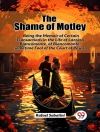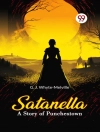In ‘The Masked Bridal, ‘ Georgie Mrs. Sheldon delves into the intricate interplay between society and personal identity within the context of Victorian England’s restrictive social norms. This novel unfolds through vivid prose and rich character development, exploring themes of love, sacrifice, and the facades individuals adopt to navigate societal expectations. Sheldon’s adept use of irony and her exploration of the duality of human nature enhance the narrative, inviting readers to reflect on the tensions between individual desires and societal obligations.
Об авторе
Georgie Mrs. Sheldon, a nom-de-plume for Sarah Elizabeth Forbush Downs (1843-1926), was an eminent author in the late nineteenth and early twentieth centuries. Her work, mainly categorized under popular domestic fiction and women’s literature, reflects the tastes and societal norms of the period, yet often contains elements of independence and resilience among her female protagonists. Sheldon’s novels, including the well-known ‘The Masked Bridal’, were serialized in dime novels and story papers, a testament to their widespread appeal and commercial success during the heyday of sensational and romantic fiction. ‘The Masked Bridal’ is an illustrative example of Sheldon’s narrative style, where the intertwining of romance and mystery propels the story forward and ensures the engagement of her audience. While her literary style may not have garnered serious literary acclaim from critics who often dismissed women’s popular fiction as trivial, Sheldon’s work has been recognized for its contribution to the genre and its insight into the challenges and aspirations of women during the era in which she wrote. Sheldon’s stories were instrumental in the development of early popular American fiction and remain of interest to scholars examining the intersection of gender, literature, and culture.












